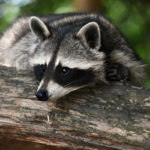Snakes are among the most intriguing and misunderstood creatures on Earth.
Ever wondered what makes snakes so fascinating? From their slithering motion to their mesmerizing scales, these creatures have captivated humans for centuries. Snakes are often misunderstood, feared, or even revered in various cultures, but there’s so much more to them than meets the eye. Whether you’re a seasoned herpetologist or just someone with a curious mind, there’s always something new to learn about these incredible reptiles.
In this article, we’ll dive into the most intriguing facts about snakes, bust some common myths, and learn why these reptiles are more than just hiss-terious beings. By the end, you’ll not only have a newfound appreciation for snakes but also a deeper understanding of their vital role in our ecosystem.
So, let’s shed the skin of misconceptions and slither into the world of serpentine wonders. Trust me, you’ll be rattled by how fascinating snakes can be!
Key Takeaway
- Snakes are diverse, with over 3,000 species worldwide.
- They play a crucial role in controlling pest populations.
- Not all snakes are venomous; most are harmless to humans.
- Snakes have unique adaptations for survival in various environments.
- Understanding and respecting snakes can prevent unnecessary fear and harm.
Different Species and Their Unique Traits
Snakes are incredibly diverse, boasting over 3,000 species worldwide. Each species has unique traits and behaviors that make them fascinating to study. Here are some standout examples:
King Cobra
The King Cobra is the world’s longest venomous snake, reaching lengths of up to 18 feet. Known for its intimidating hood and potent neurotoxic venom, the King Cobra is a master of stealth and agility. Despite its fearsome reputation, it typically avoids human contact unless threatened.
Python
Pythons are non-venomous constrictors, meaning they kill their prey by wrapping around it and squeezing until it suffocates. The Reticulated Python holds the title for the longest snake in the world, sometimes growing over 20 feet long. These giants are excellent swimmers and can be found in diverse habitats from rainforests to grasslands.
Rattlesnake
Famous for the distinctive rattle at the end of their tails, rattlesnakes are a group of venomous snakes found mainly in the Americas. The rattle serves as a warning to potential predators and threats. Rattlesnakes are skilled ambush predators, relying on their camouflage and heat-sensing pits to detect prey.
Garter Snake
Common across North America, Garter Snakes are harmless to humans and often found in gardens and near water sources. They are known for their stripes running lengthwise along their bodies. These adaptable snakes can thrive in various environments and feed on a diet ranging from amphibians to insects.
Boa Constrictor
Another non-venomous species, the Boa Constrictor, is known for its powerful constriction technique. These snakes are native to tropical regions of Central and South America. Boas have a remarkable ability to climb trees and swim, making them versatile hunters.
Black Mamba
Native to Africa, the Black Mamba is one of the fastest and most venomous snakes in the world. Despite its name, its skin is actually brown or olive. Known for its aggressive behavior when threatened, the Black Mamba can strike repeatedly and deliver a potent neurotoxic venom.
Snake Behavior and Hunting Techniques
Snakes exhibit a wide range of fascinating behaviors and hunting techniques that showcase their adaptability and survival skills. Here’s a closer look at some of the most intriguing aspects of snake behavior:
Hunting and Feeding
- Ambush Predators: Many snakes, such as rattlesnakes and pythons, are ambush predators. They rely on their camouflage to blend into their surroundings and wait patiently for unsuspecting prey to come within striking distance. With lightning-fast reflexes, they strike and subdue their prey using venom or constriction.
- Active Hunters: Other snakes, like the black mamba and the garter snake, actively hunt their prey. These snakes use their keen sense of smell and heat-sensing abilities to track down animals. Once they find their target, they strike with precision and efficiency.
Shedding Skin
Snakes periodically shed their skin in a process known as ecdysis. This is not only a growth mechanism but also a way to remove parasites. Before shedding, a snake’s skin becomes dull and its eyes turn blue, indicating it’s time for a fresh, new layer. The snake rubs against rough surfaces to start the peeling process, eventually slithering out of its old skin to reveal a shiny, vibrant new layer.
Mating Rituals
Snake mating behaviors can be quite elaborate. During the breeding season, males often engage in combat dances, where they intertwine and wrestle to establish dominance and win the favor of a female. Some species, like the garter snake, form mating balls, with several males competing to mate with a single female.
Hibernation and Brumation
In colder climates, many snakes enter a state of brumation, which is similar to hibernation in mammals. During this period, snakes significantly reduce their metabolic rate and become less active to conserve energy. They often find refuge in burrows, crevices, or other sheltered locations to wait out the cold months until temperatures rise again.
Defense Mechanisms
- Venom: Venomous snakes, such as cobras and vipers, use their venom not only to subdue prey but also as a defense mechanism against predators. The venom can cause paralysis, pain, or even death, making it a highly effective deterrent.
- Camouflage: Many snakes rely on their coloration and patterns to blend into their surroundings, avoiding detection by both prey and predators. This camouflage can be so effective that a snake can remain virtually invisible until it moves.
- Mimicry: Some non-venomous snakes, like the milk snake, mimic the appearance of venomous species (such as the coral snake) to deter potential threats. This form of mimicry, known as Batesian mimicry, is a fascinating example of evolutionary adaptation.
Habitats and Adaptations
Snakes have adapted to thrive in a variety of environments around the world, demonstrating remarkable versatility and resilience. Here’s a closer look at the different habitats snakes occupy and how they have adapted to these diverse settings:
Forests
- Rainforests: In the dense, humid rainforests of South America, snakes like the Green Anaconda and the Emerald Tree Boa have adapted to a life among the trees and waterways. Their vibrant green coloration provides excellent camouflage among the foliage, while their prehensile tails help them maneuver through the branches.
- Temperate Forests: In temperate forests, snakes such as the Timber Rattlesnake and the Garter Snake navigate through leaf litter and undergrowth. Their coloration often mimics the earthy tones of their surroundings, providing effective camouflage.
Deserts
- Arid Environments: Deserts are home to snakes like the Sidewinder and the Desert Horned Viper. These snakes have developed unique adaptations to survive the harsh conditions, such as the sidewinding movement that allows them to traverse hot sand without overheating. They are also adept at conserving water and often remain inactive during the hottest parts of the day.
Grasslands and Savannas
- Open Plains: In grasslands and savannas, snakes like the Eastern Brown Snake and the Black Mamba utilize their speed and agility to hunt and avoid predators. Their coloration helps them blend into the grasses, making them less visible to both prey and predators.
Wetlands and Swamps
- Aquatic Habitats: Water snakes, such as the Northern Water Snake and the Cottonmouth, are well adapted to life in wetlands and swamps. They are excellent swimmers and often hunt fish and amphibians. Their semi-aquatic lifestyle allows them to exploit a niche that many other predators cannot.
Urban Areas
- Adaptation to Human Environments: Some snake species, like the Rat Snake and the Brown Tree Snake, have adapted to living in urban and suburban areas. They often find shelter in abandoned buildings, gardens, and even sewers. These snakes play a crucial role in controlling rodent populations, highlighting their importance in urban ecosystems.
Mountains
- High Altitude: In mountainous regions, snakes such as the Himalayan Pit Viper have adapted to colder temperatures and rocky terrains. These snakes often have slower metabolisms and are more tolerant of cooler climates compared to their lowland counterparts.
Adaptations for Survival
- Camouflage: Many snakes have developed coloration and patterns that help them blend into their environments, making them nearly invisible to both prey and predators.
- Heat Sensing: Pit vipers, like rattlesnakes, have heat-sensing pits that allow them to detect warm-blooded prey even in complete darkness.
- Venom: Venomous snakes have evolved complex venom compositions tailored to their prey, ensuring efficient hunting and self-defense.
- Constricting: Non-venomous constrictors like pythons and boas use their powerful bodies to suffocate prey, compensating for their lack of venom.
Myth-Busting Common Misconceptions
Snakes are often the subject of myths and misconceptions, leading to unnecessary fear and misunderstanding. Let’s bust some of the most common myths and reveal the truth about these fascinating reptiles:
Myth: All Snakes Are Venomous
- Fact: Out of the thousands of snake species worldwide, only about 600 are venomous. The vast majority of snakes are harmless to humans. Even among venomous snakes, most will not bite unless provoked or threatened. Understanding which snakes are venomous and their behaviors can greatly reduce the risk of snake bites.
Myth: Snakes Are Slimy
- Fact: Despite their appearance, snakes are not slimy at all. Their skin is dry and covered in scales made of keratin, the same protein that makes up human hair and nails. The smooth and often shiny appearance of their scales can give the illusion of sliminess, but in reality, they are quite dry to the touch.
Myth: Snakes Chase Humans
- Fact: Snakes do not chase humans. When a snake moves towards a person, it is usually trying to escape to a safer location. Most snakes prefer to avoid confrontation and will only become defensive if they feel threatened or cornered. Giving snakes their space and respecting their territory is the best way to avoid any negative encounters.
Myth: Snakes Are Aggressive
- Fact: Snakes are generally not aggressive. They are more likely to retreat or remain still to avoid detection. When they do strike, it is usually in self-defense. Many snakes have developed defensive behaviors such as hissing, rattling, or bluffing to scare off potential threats, but actual attacks on humans are rare.
Myth: Snakes Can Hypnotize Their Prey
- Fact: The idea that snakes can hypnotize their prey with their gaze is pure fiction. Snakes do have excellent vision, particularly those that hunt during the day, but they rely more on their sense of smell and heat-sensing abilities to locate prey. The mesmerizing way a snake moves and its fixed gaze might seem hypnotic, but there’s no magic involved.
Myth: A Snake’s Bite Is Always Fatal
- Fact: While venomous snake bites can be dangerous and require immediate medical attention, they are rarely fatal, especially with prompt treatment. Advances in antivenoms and medical care have significantly reduced the mortality rate from snake bites. Non-venomous snake bites, on the other hand, are typically harmless and often result in little more than a scratch.
Myth: Snakes Are Evil or Cursed
- Fact: Snakes have often been portrayed negatively in folklore and religion, leading to the belief that they are inherently evil or cursed. However, snakes play a vital role in ecosystems by controlling pest populations and maintaining ecological balance. They are an essential part of the natural world and deserve respect and protection.
Why Busting These Myths Is Important
Dispelling these misconceptions is crucial for fostering a better understanding and appreciation of snakes. Fear and misinformation can lead to unnecessary killing of snakes and a lack of support for their conservation. By learning the truth about snakes, we can coexist with these remarkable creatures and recognize their importance in maintaining healthy ecosystems.
Understanding and respecting snakes, rather than fearing them, can lead to safer interactions and a greater appreciation for their role in nature. Let’s move past the myths and embrace the fascinating reality of these incredible reptiles.
Conservation Status and Importance
Snakes are an integral part of our ecosystems, yet many species face threats from habitat loss, climate change, and human activities. Understanding the conservation status of snakes and their ecological importance is crucial for their protection and the health of our environment.
Current Conservation Status
- Threatened and Endangered Species: Several snake species are currently listed as threatened or endangered. For example, the Saint Lucia Racer is considered the world’s rarest snake, with fewer than 20 individuals left in the wild. Habitat destruction, invasive species, and human encroachment are major threats to their survival.
- Population Declines: Even common species like the Eastern Diamondback Rattlesnake are experiencing population declines due to habitat fragmentation and human persecution. Conservation efforts are essential to prevent further declines and ensure these species do not become endangered.
Causes of Decline
- Habitat Loss: Deforestation, urbanization, and agricultural expansion lead to the destruction and fragmentation of snake habitats. Wetlands, forests, and grasslands are particularly vulnerable to development, leaving snakes with fewer places to live and hunt.
- Climate Change: Changes in temperature and weather patterns can disrupt the delicate balance of ecosystems. For instance, altered hibernation periods or shifts in prey availability can affect snake populations. Some species may struggle to adapt quickly enough to survive these changes.
- Persecution and Misunderstanding: Fear and misunderstanding often lead to the unnecessary killing of snakes. Venomous snakes, in particular, are targeted despite their important role in controlling pest populations. Public education and awareness are key to changing perceptions and reducing snake persecution.
Ecological Importance
- Pest Control: Snakes play a vital role in controlling populations of rodents, insects, and other small animals. By keeping these populations in check, snakes help prevent the spread of diseases and reduce crop damage, contributing to a healthier and more balanced ecosystem.
- Prey and Predator: Snakes occupy various levels in the food chain, serving as both predators and prey. They provide a food source for larger animals such as birds of prey and mammals while also regulating the populations of their own prey. This balance is crucial for maintaining biodiversity.
- Indicator Species: The presence and health of snake populations can indicate the overall health of an ecosystem. A decline in snake numbers often signals broader environmental issues that need to be addressed. Protecting snakes can, therefore, have a positive ripple effect on other species and the ecosystem as a whole.
Conservation Efforts
- Protected Areas: Establishing and maintaining protected areas like national parks and wildlife reserves helps safeguard critical habitats for snakes and other wildlife. Ensuring these areas are well-managed and connected can enhance their effectiveness.
- Research and Monitoring: Ongoing research and monitoring of snake populations provide valuable data for conservation strategies. Understanding their behavior, habitat requirements, and threats helps inform effective protection measures.
- Public Education: Raising awareness about the importance of snakes and dispelling myths can foster coexistence between humans and snakes. Educational programs, community outreach, and collaboration with local communities are essential for changing attitudes and promoting conservation.
Conclusion
Recap: Snakes are truly remarkable creatures, each species with its own unique traits and adaptations. We’ve uncovered fascinating facts about their diverse species, intriguing behaviors, and the incredible ways they’ve adapted to various habitats. We’ve also busted some common myths that often lead to misunderstandings and highlighted the crucial role snakes play in our ecosystems.
Understanding the importance of snake conservation is key to protecting these vital members of our natural world. From controlling pest populations to maintaining ecological balance, snakes contribute significantly to the health of our environment.














